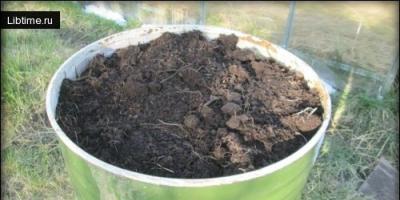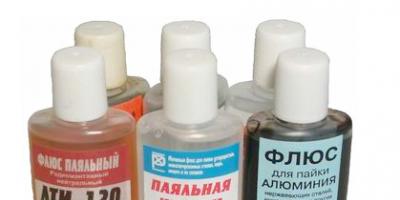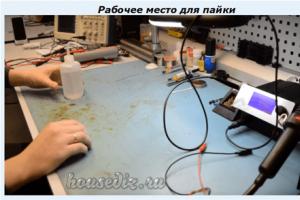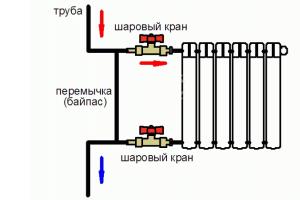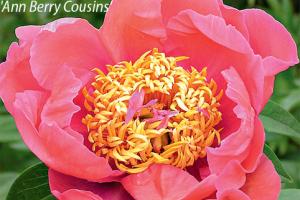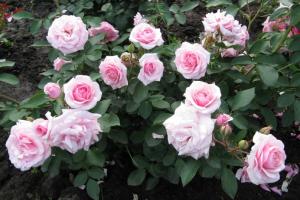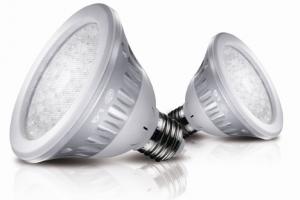Garden care includes tillage, watering and fertilizing fruit trees. Let's talk about what and how to feed trees most productively.
Fertilizing with organic fertilizers
Fertilizing with organic fertilizers includes the use of chicken manure as a fertilizer, which is available in home gardening; it must be diluted with water: one bucket of manure for 10 buckets of water, and when watering, the manure must be thoroughly mixed. It is better if chicken manure or fresh slurry is poured into tubs in the summer, diluted with water and left until it ferments, and then used as fertilizer. Before adding, it is good to add 50-100g of superphosphate and potassium salt, but no more, per bucket of solution and mix thoroughly. If nitrogen, which is rich in manure and slurry, promotes increased tree growth, That phosphorus and potassium are needed for increased fruiting and better ripening of wood. This is especially important in foothill and mountainous areas. However, if the garden is located on thick black soil and is provided with water, then you don’t need to add manure, but feed it only with superphosphate and potassium salt.How to apply fertilizers correctly
To apply fertilizer correctly and for this to give maximum benefit, it is necessary to make 6-10 holes 60-70 cm deep around the tree, within the radius of the crown, with a crowbar and pour 150-200 g of superphosphate into each of them. In between the holes with superphosphate, the same number of holes are punched and potassium fertilizer mixed in half with soil is added to them. This kind of garden feeding can be done only at the beginning of fruiting, and then every 2-3 years. In gardens in dry areas, more manure, less superphosphate and even less potassium salt should be applied. You can completely abandon this fertilizer. IN young trees are less responsive to fertilizers. Therefore, they give a smaller increase in growth compared to an older garden that is entering the fruiting season. But to create a healthy, long-lasting tree with a well-developed crown, it is necessary to provide it with all the conditions for good growth and development from the moment of planting and throughout its life.Fertilizer dosage
Different tree species respond differently to the types of fertilizers applied. and prefer manure and mineral fertilizers. Dosage of applied fertilizers will be different for each area and even for each individual garden, depending on the soil and the supply of certain nutrients already available in it.| One year after landing | Diameter of tree trunk circles | Quantity of manure (kg) | Irrigated gardens | Rain-fed gardens | ||||
|---|---|---|---|---|---|---|---|---|
| Ammonium nitrate (33%) | Super-phosphate (16%) | Potassium chloride (50%) | Ammonium nitrate (33%) | Super-phosphate (16%) | Potassium chloride (50%) | |||
| 1-2 | 2 | 12-15 | 70 | 120 | 80 | 30 | 60 | 10 |
| 3-4 | 2,5 | 20-25 | 110 | 180 | 50 | 45 | 90 | 20 |
| 5-6 | 3 | 30-40 | 160 | 270 | 70 | 60 | 130 | 30 |
| 7-8 | 3,6 | 40-50 | 220 | 360 | 100 | 90 | 190 | 40 |
| 9-10 | 4 | 50-60 | 300 | 480 | 130 | 120 | 250 | 60 |
| 11-12 | 5 | 80 | 450 | 750 | 200 | 180 | 280 | 80 |
- in young gardens - in early spring and during the period of increased shoot growth.
- in fruit-bearing plants - in early spring or after flowering, as well as at the moment of shedding of excess ovary.
Cautions when fertilizing the soil
There are some precautions when fertilizing the soil. You should not apply fertilizer to the soil haphazardly and whenever necessary. Such “nutrition” will do more harm to the plant than good. When checking the soil of one of the garden plots in a chemical laboratory, the presence of nitrogen in the soil was found to be five times higher than normal, and phosphorus and potassium – 3 times higher. You can get a good harvest from such a plot only after washing the soil. When analyzing the water of a stream flowing through the territory of this gardening collective in the fall of the same year, nutrients were found in it near the norm, and in some areas even more than the norm. Many gardeners strive to add as much fertilizer as possible, even as strong as chicken manure. At the same time, they do not take into account the fact that plants can absorb fertilizers only in solutions, through the absorption zone of the roots, when the fertilizer concentration does not exceed 1%. When foliar feeding, by spraying the leaves, the solution should be no more than 0.5%, i.e. 50g of active ingredient per bucket of water. At higher solution concentrations, gentle the suction hairs of the roots will get burned, and the plant will stop growing for at least two weeks. You can and should use chicken manure, but before that you need to put it in a barrel (a bucket with 100 liters of water) and let it ferment; and then dilute one liter of solution in a bucket of water. Only after this, proceed with application, and then only if you have found out which plant to water and when, what the norm is, and they can be different. Remember: you cannot apply nitrogen fertilizers, even in the form of a solution, later than July. In this case, the plants will begin to actively grow and will not have time to complete growth before frost. And here fertilizing with phosphorus and potassium in this period will contribute to the formation of flower buds and better ripening of wood.Feeding with complete fertilizer
Filling with fertilizers gives good results, especially complete fertilizer, who, as is known, is humus, or well-rotted manure, or compost with the addition of mineral fertilizers. It is necessary to add complete fertilizer to the soil before planting trees. After 2-3 years, depending on the provision of water to the site, it can be repeated. Compost is made from organic plant residues and food waste. They must be placed in heaps and covered with earth, not allowing them to dry out. It is useful to add superphosphate to compost. It can be used after complete reheating. Plants also need microelements. It has been noticed: in the absence of iron in the soil, the leaves turn pale, so-called chlorosis begins, and with a lack of zinc, the trees suffer from rosette-small leaves. Plants require, although in minimal quantities, boron, copper, manganese and others. They can be applied together with spraying, adding them to solutions.
Plants also need microelements. It has been noticed: in the absence of iron in the soil, the leaves turn pale, so-called chlorosis begins, and with a lack of zinc, the trees suffer from rosette-small leaves. Plants require, although in minimal quantities, boron, copper, manganese and others. They can be applied together with spraying, adding them to solutions. The main purpose of fertilizers is to make fruiting regular and abundant from year to year. After all, after the harvest period there is a lull; trees and shrubs do not produce as much fruit as gardeners would like. In addition, the nutritional and taste qualities of the fruit are reduced. This occurs due to soil depletion. The duration of lean or low-yield periods is 2–3 years. This is quite a lot for farms. Therefore, it is recommended to use various fertilizers for fruit trees.
Types of fertilizers for feeding fruit trees
The type of fertilizer and its amount depends on the plant variety, soil composition, and time of year. There are special agronomic tables for professional plant care in certain regions. Using them you can calculate dosages for each variety of fruit trees.
For amateur gardeners, the basic rules for using fertilizers will be enough: when to apply, how much and what kind of fertilizers.
The most important and necessary elements for plants are potassium, nitrogen, phosphorus, vitamins. Fertilizers are divided into mineral and organic, organic-mineral, bacterial, and microfertilizers. The most commonly used are mineral and organic. Both are necessary for fruit-bearing trees and shrubs at certain times of the year.
Organic
Organic fertilizers are considered the most environmentally friendly. If it is possible to regularly use bird droppings, cattle manure, compost, peat, then you should definitely use it. Fertilizing with organic fertilizers is carried out 3–4 times during the fruiting season.
Organic matter also contains trace elements such as nitrogen, calcium and potassium. But their quantity is not enough for full growth and fruiting. Therefore, organic fertilizers are often mixed with mineral ones.
The advantage of organic additives is that they contain bacteria that have a positive effect on the composition of the soil.
Mineral
Mineral fertilizers are:
- potassium;
- nitrogen;
- phosphorus.
Nitrogen promotes the formation of leaves and new shoots, therefore there will be more oxygen in the wood tissues, which will have a positive effect on the fruiting of trees.
Phosphorus increases resistance to disease, makes fruit plants more resistant to climate and weather conditions, as well as to pests. A kind of immunomodulator for trees.

Potassium forms a powerful root system and participates in the process of synthesis of chemical elements in fruits. In other words, the taste of fruit directly depends on the presence of potassium in the soil.
Feeding fruit trees and shrubs works according to the principle - it is better to underfeed a little than to overfeed. This is especially true for young seedlings.
Fertilizers for fruit and berry plants should be applied at the roots and on the foliage., that is, to produce root and foliar feeding.
As for organic matter, it needs to be added in the warm season. Better in autumn or spring. The poorer the soil, the more often fertilizing is required - at least once a year. For young plants, a gradual increase in substances is desirable. For example - in the first year do not feed, in the second - 1/3 of the required amount, in the third - do not feed, in the fourth - 1/2 of the dosage. And so on.

Potassium is needed by fruit and berry plants depending on the period of development. At the stage of formation of the root system, the application of potassium fertilizers is mandatory.
At the stage of formation and ripening of fruits, nitrogen fertilizers should not be applied, as they promote the growth of branches and leaves, which means there will be insufficient nutrients for the fruits
Nitrogen is best used in a mixture with other trace elements - for example, potassium. The ratio of substances is such that it does not interfere with the ripening of fruits, but at the same time strengthens the plant. And potassium performs the function of feeding trees and shrubs.
Where to apply fertilizer
Feeding of fruit trees is carried out in the area around the trunk circle. To do this, dig a groove across the width of the crown and pour the prepared mixture into it. For mature trees, 2–3 ditches should be dug; for young seedlings with a crown radius of 1–2 m, 1 is sufficient. Potassium fertilizers must be diluted with water.

Organic fertilizers are applied as follows: dig up the tree trunk circle at a distance of 50 cm from the trunk, along the perimeter of the crown. Depth - 40 cm. Apply a ready-made mixture of mineral or organic fertilizers diluted with water. For an adult plant, liquid with nutrients is diluted in containers with water. Approximately 3 – 4 buckets of the mixture are consumed for each tree.
Rules for applying mineral fertilizers
- on sandy soils in spring or summer during flowering, because the substance is quickly washed into the lower layers of the soil;
- on clay ones - in the fall after harvesting.
Nitrogen fertilizers are more effective in combination with potassium and phosphorus. Signs of a lack of nitrogen in the soil are slow growth of young branches and impaired chlorophyll production. The leaves on the trees in the garden will be pale or yellow-green.
It is better to apply phosphorus fertilizers to the soil in the fall, since phosphorus is poorly soluble in water and it takes a long time for plants to absorb it. It is necessary to apply to the depth of the roots with the obligatory sealing with a layer of soil.
On clay soil, fertilizer is applied once a year in autumn or spring. Better - once every three years. If applied together with manure, then the dosage must be reduced so as not to damage the root system.

Phosphorus deficiency can be determined by the color of the foliage - it turns red or purple.
The most commonly used potassium fertilizers are potassium chloride and potassium sulfate. The choice depends on the type of soil. If the reaction is acidic, add potassium chloride. Sulfate is more applicable in greenhouses.
On gray soils, potassium fertilizers are not used, or are applied in minimal doses
Potash substances are used in autumn and spring to ensure frost resistance of trees and shrubs. It should be remembered that not all shrubs grow well in chlorine soils. Therefore, it is necessary to observe the dosage of potash fertilizers.
Foliar feeding
Produced by spraying leaves. Foliar feeding of garden trees and shrubs in the summer saturates the plants faster and more effectively, so all nutrient mixtures must be diluted with water. It is best to use ready-made formulations for these purposes.
Both organic and inorganic fertilizers are used for the foliar method:
- zinc;
- manganese;
- urea;
- copper sulfate;
- phosphorus;
- potash fertilizers.
Video: how to get a large harvest of apples using foliar feeding
Foliar feeding of trees in the fall protects the plant from pests and increases survival in winter. Fertilizers for fruit trees using the foliar method should have a weaker composition so as not to damage the foliage.
Schedule and organization of plant feeding
You can start adding soil amendments in the spring, immediately after the snow melts. Spring fertilizing is more necessary for plants, and autumn fertilizing is more necessary to improve the soil composition.
Nitrogen, phosphorus and potassium chloride are suitable for the first application.
Feeding fruit trees in summer is done with potassium sulfate, nitrogen and organic fertilizers. The foliar method is also used.
In autumn, potassium and phosphorus are most important. At the same time, the trees are prepared for winter and fertilizer is applied to the soil.
Fertilizer calculation
When using ready-made solutions in combination with organic mixtures, the dosage is halved
General rules:
- the concentration of fertilizers for young seedlings needs to be reduced;
- using ash, it is not necessary to apply microfertilizers;
- periodically it is necessary to reduce the acidity of the soil with slaked lime;
- If fruit trees and shrubs have been pruned, then the dosage is increased for rapid shoot growth.
Calculation and timing of fertilizing using the example of an apple tree
In the spring, before flowering, nitrogenous fertilizers are applied to the digging under the tree. This could be manure, compost or droppings. You can use ammonium nitrate or urea.
The next stage is flowering. Potassium, phosphorus and organic - litter or manure. Total about 35 buckets per tree.

Fruit ovary - potassium. During this period, spraying with ash or urea helps.
Ripening of fruits and berries - potash fertilizers.
After harvesting - phosphorus, humus.
Typical feeding of fruit and berry plants
For use in the garden, you can take one-component additives and dilute them according to the instructions. At the same time, add those substances that are most relevant for a given period. It is easier to deal with ready-made mixtures, which only need to be diluted with water, since the percentage ratio in them has already been met by the manufacturer.
For stone fruits
When growing fruit plants in the garden - cherries, cherries, plums, apricots - you should stock up on manure. You need to take rotted manure, otherwise its effect will be delayed and the tree will not receive nutrients at the right time.
Organic supplements are poor in mineral compounds, and for stone fruits potassium and calcium are required in very large quantities. Therefore, before fruiting begins, you should treat the soil well and add all the necessary substances to it. They are introduced into the tree trunk circle to a depth of 10 cm.
If there is ash in stock, then less mineral fertilizers can be used. The ash contains lime, which reduces the acidity of the soil and has a good effect on the harvest.
Young stone fruit plants require more nitrogen nutrition than potassium.
For pomaceae
Apples and pears require more fertilizer than stone fruits. However, it is not recommended to fertilize trees in the first year of life. Only from the second - and then little by little. Phosphorus-potassium in the fall, nitrogen in the spring.
Seed plants must be sprayed with microfertilizers, Copper sulfate is especially important. This protects trees from fungal diseases. The lack of phosphorus in the soil is compensated by spraying. In dry summers, the garden may need manganese, boron, and zinc.

Spring feeding of fruit trees is considered one of the most significant agrotechnical practices. Without fertilizing, it is very difficult to achieve a good fruit harvest and a decorative appearance of plants. A timely intervention will saturate the soil with useful microelements, which will lead to good flowering and fruiting in the future.
Fruit trees can live for decades, “consuming” beneficial microelements contained in the soil, especially during the autumn harvest season. But you should not feed them thoughtlessly, since plants need different amounts of fertilizer throughout the growing season. For example, in the spring they primarily need potassium, and a little less phosphorus and nitrogen. During flowering and after the end of this process, when intensive growth of new shoots takes place, trees need, first of all, nitrogen and phosphorus.
Fertilizer for spring feeding of trees
When applying fertilizing, you should also take into account the characteristics of the wood species. For example, coniferous plants require less nitrogen than pear and apple trees because they do not need to regrow fallen leaves in the spring.
But in fruit trees, over time and with high yields, the removal of nutrients increases. The amount of nitrogen contained in the soil depends on the percentage of humus that is in it. Sandy soil contains less nitrogen and phosphorus than loam or clay. All these features of the soil and trees should definitely be taken into account when planning to feed your orchard.
They begin already in March, adding the first fertilizers to the melting snow. This method is very convenient: the snow, starting to melt, will draw useful substances into the ground. Take highly soluble mineral fertilizers in the form of a mixture and sprinkle about 40 g near the trunk circles of each tree. Literally two handfuls of the mixture are enough for young seedlings, for adults – from 2 to 5. Distribute the mixture as evenly as possible over a tree-trunk circle with a diameter of at least 1.5 meters.
For old trees, fertilizer should be applied not only along the edge of the trunk circle, but also along the perimeter of the crown, where there are many suction roots. However, if your site has a large slope, this method is not recommended for use - the fertilizers will quickly be washed away by melted snow.

Tree root feeding
After the snow melts, do not forget to add potassium and phosphorus to the soil using sulfate, ash or potassium. Some people use complex mixtures labeled “spring”, but this is not recommended. Typically, such formulations contain quite a lot of nitrogen, which is why when using such fertilizers there is a risk of excess nitrogen in the soil. And this, in turn, will lead to the appearance of fungus and reduce the viability of trees.
Gardeners usually use one of the following options:
- Complex spring fertilizers in March and April.
- Nitrogen supplements in March, and phosphorus and potassium in April.
In May, it is advisable to add rotted manure or compost to the soil. If you don’t have such “organics”, complex mineral fertilizers will do. The dose of fertilizing will depend on the soil. Thus, soddy-podzolic soil requires the maximum dose of additives, forest soil requires an average dose, and chernozem requires a minimum dose. By the way, fertilizers can be applied not only to the soil. There is another option - mix additives with mulch, straw, rotten leaves and compost.
If root feeding helps a tree revive after winter, become stronger and increase productivity, then foliar feeding will help fight various diseases. Work also needs to be carried out in early spring, as soon as the snow crust has melted. For foliar feeding, use a mixture of copper sulfate and. In the store you can purchase a special mixture of these ingredients, which is designed for a bucket of water. Just mix all the ingredients according to the instructions, and you can start processing.
Undoubtedly, you can use other means for spraying, for example, Bordeaux mixture, but the use of vitriol and urea has one important advantage - such means not only help fight diseases, but also serve as excellent “nutrition”. During processing, urea, penetrating through the bark, will begin to feed the tree with useful microelements. Be careful when using this mixture as it is toxic.

Spraying with Bordeaux mixture
That is why you should follow some rules:
- be sure to use gloves and a respirator, wear goggles if possible;
- Treat trees only on calm and windless days.
This mixture can also be used to process gooseberries or black currants.
Feeding trees in spring also depends on the age of the plants. The main task of young seedlings is to take root in a new place and begin to develop as quickly as possible. Fruiting during this period is not the main goal. According to experienced gardeners, it is best to use fertilizer after planting. AgroProrost, which will give the young seedling all the trace elements necessary for its rooting and growth (nitrogen, potassium, zinc, magnesium). This is especially important if your site is not characterized by black soil, but by clay or sandy soil, where there is a lack of all nutrients.

"AgroPrirost" for seedlings
The first feeding is carried out by adding a dry additive to the prepared holes according to the instructions. The next application of the additive is usually carried out in the fall. Starting from the fifth year of life, fruit trees need to be switched to “adult” fertilizing, and mineral fertilizers must be applied. For one square meter of area you need to add approximately:
- 15-20 g nitrogen;
- 10 g phosphorus;
- 20 g potassium.
These substances need to be applied in early spring under the snow. A little later, when the earth warms up, you can add “organic matter”. Once every two years, about 6 liters of manure per square meter of free circle are applied to each tree. In the spring, after the onset of the ovary phase, you can use crushed bird droppings. To ensure that fertilizing fruit trees is as successful as possible, carefully read our following tips.
- To help the root system absorb the added additives faster, try to use liquid fertilizers;
- Seedlings can be fertilized only after rooting in a new place;
- It is advisable to carry out work either in the evening or early in the morning (or better yet, wait for cloudy weather);
- dry fertilizers are applied either before watering the tree or immediately after it (an exception to the rule is the application of fertilizers on melting snow, which is carried out in early spring);
- When applying liquid fertilizers, it is advisable to water the soil a little, which will reduce the risk of burns to the root system.
In the spring, when the trees are just beginning to wake up from a long winter sleep, for their normal development and high fertility rate, it is recommended to fertilize the trees in the spring with compounds containing nitrogen. They trigger vegetative processes, as a result of which your garden will grow more actively. Fruit bearings should be fed throughout the growing season.
When caring for a garden, fertilizing and fertilizing is an important process, without which you will not get healthy and beautiful trees or a large harvest. When fertilizing trees correctly, you will not only provide them with important nutrients, but also significantly maintain soil fertility and improve its chemical and mechanical properties. Your dacha and garden will become the pride of the family!
How to feed fruit trees in spring
Spring fertilizing of fruit trees and shrubs is carried out with organic fertilizers:
- Peat;
- Peat feces;
- Compost;
- Manure;
- Humus.
These fertilizers enrich the soil with nutritious vitamins and substances, and also have a beneficial effect on the condition of the soil.
Fertilizer application is included in the mandatory list of work. Around mid-April, the first spring feeding of pears and apple trees is carried out. Already when the first leaves are visible on the trees, you can apply fertilizer. Only root feeding of the apple tree is performed. To do this, mixtures with nitrogen are added to the tree trunk circles. It could be:
- urea,
- humus
- or ammonium nitrate.
Such mixtures activate vegetation processes in trees.
Fertilizers are added to the soil when loosening it or digging. It is important to consider that fertilizers must be applied along the perimeter of the crown, where the ends of the main roots with suction roots are located.
Spring feeding of apple trees during flowering performed with nitrogen-containing mixtures. One of the following options is introduced into the trunk circle for digging, under one tree, along the perimeter of the crown, not the trunk:
- urea – 500-600 g;
- ammonium nitrate and nitroammofska - 30-40 g each;
- humus - about 5 buckets.
After flowering, during the period of fruit ripening, apple trees are fed with one of the following liquid formulations from:
- nitrophoska, sodium humate and water;
- or 100 g of superphosphate and 60-70 g of potassium sulfate;
- or 1.5-2 liters of liquid chicken manure;
- or 0.5 buckets of slurry;
- 250-300 g of urea.
Moreover, each apple tree should receive more than three buckets of this composition. You can partially replace root feeding with foliar feeding. To do this, it will be enough to spray the trees with urea. This method can be used after all the leaves have already appeared and grown on the apple tree. The tree will absorb useful substances through them and transfer them to the root system.
Feeding cherries in spring
Even before flowering, the first fertilizing is carried out using urea or ammonium nitrate. Since there is still little foliage on the trees, it is better to apply liquid fertilizers to the soil.
- During flowering, fertilizing of trees in the spring is carried out using the root method with the addition of mixtures with nitrogen and organic matter.
- During the flowering period of the tree, you can use chicken manure or green fertilizer.
If you use litter, it is important to monitor its proportion and condition. Too much of this fertilizer can damage the roots of the tree.
After flowering, you can add compost, manure and dry organic mixtures as additional feeding. Without this, your tree will not produce the expected harvest. Fertilizer should be applied in liquid form to tree trunk circles or under digging. Pay attention to the amount of precipitation. If there has been little rain, it is best to periodically pour liquid fertilizers into the soil.

How to feed a pear in spring
Pears, like other trees, need spring feeding. It is fertilized with saltpeter or urea, and sometimes chicken droppings are used (this must be done carefully so as not to burn the tree). Saltpeter is diluted with water in a ratio of 1:50. The scheme for feeding pears is very similar to feeding cherries. Almost all feeding of fruit trees in the spring is the same. It is also very important to feed pears in May using nitroammophoska, as well as in spring.
In order to correctly apply the required amount of fertilizer, you need to understand that over the years the area of the pear tree trunk increases, so more fertilizer needs to be applied. Usually the calculation is carried out per 1 square meter and multiplied by the area of the fertilized surface:
- a tree up to 4 years old has a tree trunk area of 5 square meters. meters;
- up to 8 years = 10 sq. m;
- up to 12 years = 20 sq. m.
Approximate rates (in grams) for applying basic mineral fertilizers per 1 sq.m. fertilized area:
- ammonium nitrate - 15-25,
- urea - 10-20,
- superphosphate - 40-60,
- phosphate rock - 30-40,
- potassium sulfate - 20-25,
- potassium chloride - 15-20,
- wood ash - 700,
- complex fertilizers: ammophos - 70-80, nitroammophos -70-80.
When preparing fertilizer, adhere to the following ratio between fertilizer nutrients (nitrogen, phosphorus, potassium). It is desirable that it be 3:1:4.
That is, the best way to feed a pear in the spring is if you take 3 parts ammonium nitrate(it contains 35% nitrogen) + 1 part superphosphate(it contains 14% digestible phosphoric acid) + 4 parts potassium sulfate(it contains 48% potassium oxide).

Feeding shrubs in spring
In the spring, it is very important not to forget that fertilizing is also important for fruit and berry bushes. Suitable for feeding currants, blackberries, gooseberries, rowan in the spring:
- potassium nitrate, nitrophoska or azophoska;
- An excellent option for fertilizer would be ecophoska or “Kemira - universal” (3 tablespoons per 10 liters of water);
- you can also use urea with ash (per 10 liters of water add 3 tablespoons of urea and 0.5 cups of ash);
- you can mix fertilizers, here is one of the recipes: add a handful of nitrate to 1 large bucket of manure humus and apply this mixture throughout the season at 5-10 kg per hundred square meters
When to feed currants, raspberries and other fruit bushes:
- At the time of active flowering, it is mid-May;
- During the active growth of new shoots, in early June;
- At the time when the berries are set and filled, this is the second half of June - July;
- It is better to feed the bushes the last time after picking the berries.
Any root fertilizers are applied to the bushes after heavy watering or rain.
When overfeeding, young shoots ripen poorly and are more damaged by frost; pests and diseases “gather with pleasure” on such bushes. Everyone is able to determine the sufficient amount of complementary feeding independently, based on growth. If the growth of raspberry shoots over the summer exceeds 1.8-2 m, then the dose should be reduced.

Feeding spruce trees in spring and other coniferous ornamental trees in spring
After planting spruce and other coniferous trees, during the first five to seven years they need to be fed with organic or complex mineral fertilizers twice per season.
- First feeding organic applied in early spring (as soon as the snow melts, fertilizers are applied to the moist soil). The second is at the end of June - beginning of July.
- Fertilizing with minerals slow acting Fertilizers for the roots of coniferous trees are applied once, in the spring. If they are introduced later, the tree will slowly become woody (nitrogen leads to the formation of new young branches) and will not be prepared for winter, and as a result may freeze.
The best fertilizer for coniferous plants is considered mature compost, which is placed under the roots of trees 3 cm thick and lightly dug in with a shovel, mixing with the existing top layer so that the fertilizer enters the soil faster. If compost or humus is not available, then it can be replaced by fertilizers based on vermicompost, which are sold in liquid form. They are diluted in water, then complex mineral fertilizers can be added to the solution.
Work in the garden lasts throughout the warm season. To get a rich harvest of fruits and berries, you should take care of the health of the plants in advance and apply fertilizers. However, not every substance will be equally beneficial. They are introduced at different phases of crop development and participate in certain vegetation processes.
Purpose of feeding
Garden care necessarily includes regular fertilization. Trees and shrubs have a permanent place on the site and feed on substances that are present in the soil. As they grow, as well as for the formation of fruits, they consume significant reserves of microelements, so it is important to replenish them in a timely manner with special mixtures.
Trees that annually receive the necessary doses of fertilizing will differ from those that are not cared for by several factors:
- high resistance to temperature changes and weather conditions;
- quantity and quality of harvest;
- rapid growth;
- duration of fruiting period.
Important! To understand what type of fertilizer is suitable for plants, it is worth analyzing the composition of the soil in the garden and monitoring the condition of the trees. Deficiency of any of the elements is manifested by characteristic symptoms.
Work time
Fertilizers are applied to the soil throughout the warm season. The norms and the method of their application depend on the needs of plants for certain microelements in different periods. There are two main feedings - autumn and spring, at which time a significant part of the nutrients is added. Trees should also be fed during flowering and fruiting, since the spring reserves of microelements in the soil are gradually depleted.
in spring
Garden maintenance work begins after the weather warms up. The first fertilizing occurs in early spring - it is important to replenish nitrogen reserves in the soil and add additional microelements for tree growth. In total, three feedings are recommended for the spring period:
- in early spring, after activation of the growing season, about half of the annual nitrogen norm is added to stimulate the growth of young shoots; you can also add no more than 15% of the total amount of potassium and phosphorus;
- a week before the formation of flowers, during the budding period - additional feeding with the addition of 10-15% of all essential microelements, allows you to increase the number of healthy, full-fledged ovaries;
- If necessary, another feeding is carried out a week after the end of flowering in the same dosage.
In summer
In summer, nutrients are added in small quantities. The main summer feeding is carried out at the end of June, when shoot growth slows down. After harvesting, to stimulate the formation of buds for the next year, it is useful to apply 15% of the annual norm of all basic fertilizers (nitrogen, phosphorus and potassium).
in autumn
In autumn, it is recommended to add at least 50% potassium and phosphorus fertilizers before digging. They are stored in the soil and can be used by plants next year. Nitrogen fertilizers during this period can harm fruit trees. If under their influence they begin to grow intensively and form young shoots, they may die with the first frost.
What fertilizers should be applied?
Plants receive nutrients from the soil through the root system or through the surface of the leaves when sprayed. They can be added as natural or purchased organic mixtures - complex chemical compounds that improve soil properties. These substances can also be found in the form of separate mineral elements, convenient for absorption through the rhizome.
Organic
This is pet manure and poultry droppings, compost, humus and herbal decoctions. Such mixtures contain minerals in bound form, which ensures their prolonged action. When decomposed in the soil, trace elements are released and can be absorbed by the rhizome. Organic fertilizing is the best way to increase the nutritional value of insufficiently fertile soil.

Mineral
Mineral supplements contain individual microelements in a ready-to-use form. These can be mono-fertilizers based on only one active ingredient or complex mixtures. To use them, it is important to understand what substances plants need in different phases of development:
- for the growth of rhizomes and shoots in warm weather - nitrogen compounds;
- for abundant flowering and fruiting - potassium and phosphorus preparations;
- additional microelements (boron, zinc, molybdenum, calcium and others) - if they are deficient in the soil.
The main elements for plant nutrition are nitrogen, potassium and phosphorus. Additional minerals are present in complex fertilizers in smaller quantities, and in some they are absent. However, their role for the integrated development of trees and shrubs is no less important.

Popular fertilizers
To feed trees and shrubs in the garden, it is easier to purchase a ready-made mixture. They are available in the form of liquid solutions, solid powders or granules. The main method of applying fertilizer is watering; it is additionally useful to spray the leaves to quickly absorb the elements.
Joy
This is a granular fertilizer based on large amounts of nitrogen and phosphorus; potassium is contained here in a lower concentration. The granules are applied directly into the soil without prior dilution with water. The rate of their use varies from 30 g for shrubs to 80 g for mature fruit trees. The fertilizer is suitable for use throughout the warm season, from March to October.

Gumi-Omi
Organomineral feeding based on basic microelements (nitrogen, potassium and phosphorus), additional minerals and organics. Available in granule form. The organic part is represented by fermented chicken manure - a valuable source of potassium for maintaining carbohydrate metabolism processes in trees. The drug is applied in dry form or aqueous solutions are prepared on its basis for irrigation.

Hello
Zdraven fertilizer “for fruit trees and shrubs” is a complex mineral mixture. This is a dry fertilizer that is suitable for both simple application to the soil and for preparing aqueous solutions. They can be used for watering or spraying leaves. In total, fertilizer is applied three times during the season: during the period of active growth of trees, and then after flowering and during the formation of fruits.
Important! Fertilizer Zdreven begins to act only after dissolution with water. When applied to the soil in its pure form, it is useful to water the plants the day before the procedure. This event will also protect the roots from chemical burns.

Hera
"Fruit Garden" is one of the most popular mineral fertilizers for trees and shrubs. It contains basic and additional microelements in optimal concentrations, is well absorbed by plants, increases their stability and productivity. Fertilizers of this brand are present on the shelves of almost all flower shops and are inexpensive.

Ava
They differ from analogues in their maximally prolonged action. It is enough to add this drug to the soil in the form of granules during planting, and then repeat the procedure every 2-3 years. The modern release form allows nutrients to be released gradually, as needed. The granules remain in the soil and are not washed away by rain or water when watering.

How to deposit correctly?
Depending on the form of release, all fertilizers can be divided into two categories: liquid and dry mixtures. The latter can be presented as powders or granules, which are dissolved in water or used in dry form. There are several methods of fertilizing:
- watering - liquid or dry fertilizers are dissolved in water and applied to the soil in a circle around the trunk;
- spraying - solutions are poured into a spray bottle and distributed over the surface of the leaves, while the concentration of active substances should be lower;
- granules and powders that are soluble in water can be used to prepare aqueous mixtures for watering or spraying;
- dry long-acting fertilizers can be mixed with the soil in their pure form - they are scattered over the surface of the soil and dug to a depth of 10-15 cm.
Store-bought drugs should be used in the dosages specified in the instructions. When preparing solutions yourself, it is necessary to take into account the plants’ annual need for mineral elements and add them in small quantities.
Features of feeding
Despite the fact that the same mixtures are used to feed garden plants, there are several features of their use for trees and shrubs. They depend on the life cycle of plants, their nutritional needs and the timing of fruiting.
Fruit trees
Fruit trees respond well to the addition of organic fertilizers. They can be used in pure form or as part of aqueous solutions for irrigation. The farm always has the opportunity to prepare home compost from waste or add additional cow or horse manure.
Basic plant nutrition is carried out after mechanical cleaning of the garden. Twice a year, when the growing season of trees is slow, it is useful to clear them of old dried branches and bark, form a crown, and remove last year's grass. In this case, nutrients will be absorbed faster, and productivity indicators will significantly increase.

Berry bushes
Garden shrubs begin to awaken after winter earlier than trees. The first application of fertilizers should occur in early spring, immediately after warming. In addition, these plants have a less developed root system. It is useful for them to periodically apply fertilizing by spraying so that nutrients are absorbed through the surface of the leaves.
Important! The instructions for many drugs indicate dosages separately for plants and shrubs. The latter need less concentrated solutions due to the thinner bark (when spraying) and the more sensitive root system (when watering).

Fertilizers when planting seedlings
It is recommended to prepare a pit for seedlings in advance. If planting is planned in the spring, it is better to create a place for trees in the fall. To do this, you need to dig a shallow hole (from 30 cm deep for shrubs to 70 cm for trees) and add nutrients to it. If you plant a tree directly into the ground, as the soil shrinks, it will gradually go underground. The result of this process is stagnation of moisture and uneven development of the plant.
The pit should not be left empty for the winter, otherwise water will accumulate in it. To refuel it, it is recommended to add a complex nutrient mixture:
- 1-2 buckets of rotted manure;
- the same amount of humus or peat;
- 1-2 cups of wood ash per 1 m of soil;
- the soil that was in the hole.
Many gardeners do not recommend applying mineral fertilizers directly when planting seedlings. At this point, the nutrients will already be present in the soil - they were added when preparing the hole. The root system of young trees is still very sensitive, so mineral mixtures can leave burns on it. If necessary, fertilizers are added at some distance from the trunk of the seedlings.
Conclusion
The only way to annually get a rich harvest from fruit trees and berry bushes is to regularly apply all the necessary fertilizing. If plants receive the right amount of nutrients, they will grow large and healthy, resistant to weather conditions and pests.

